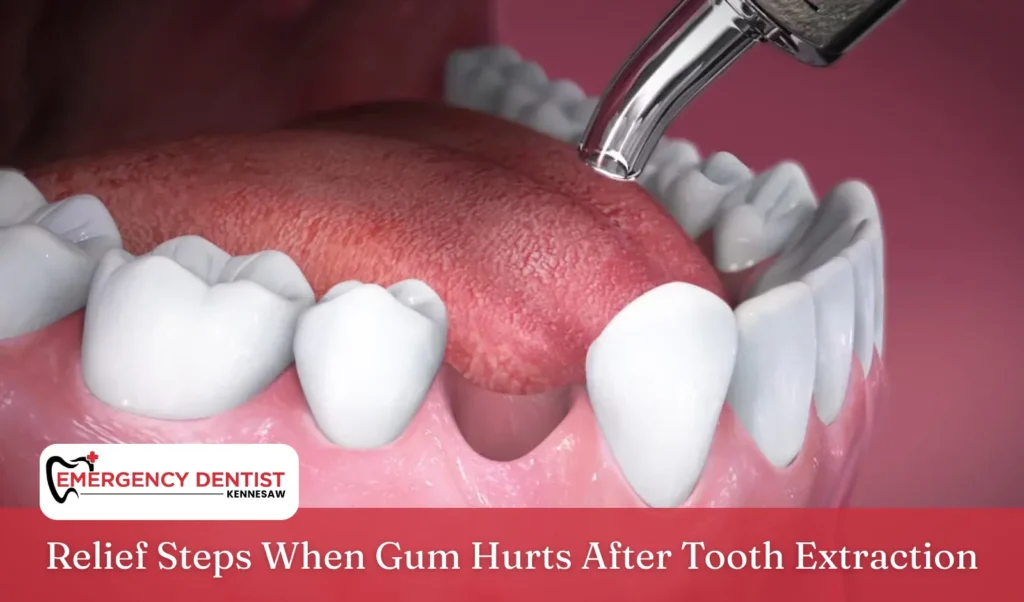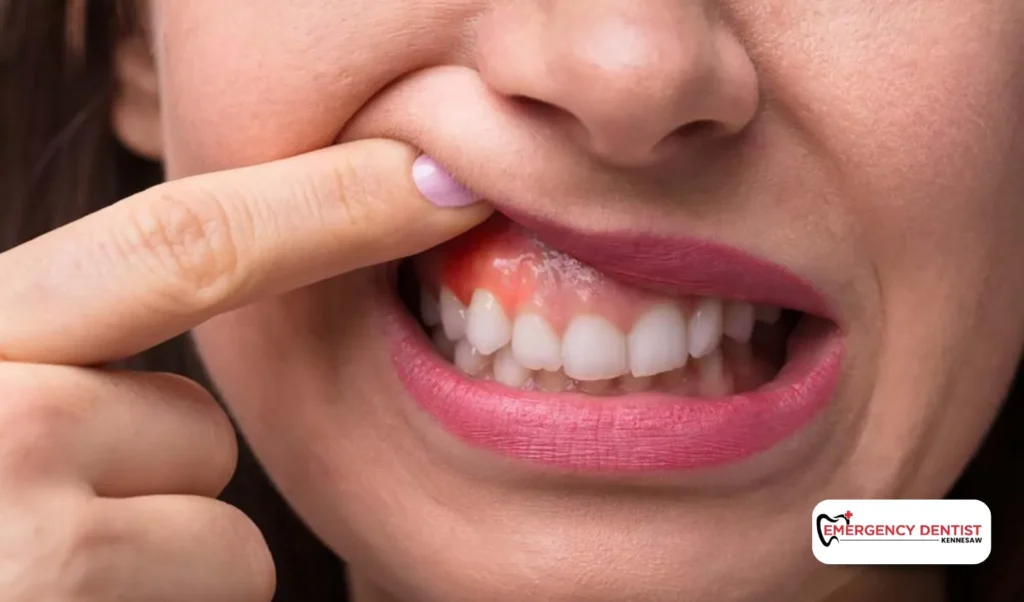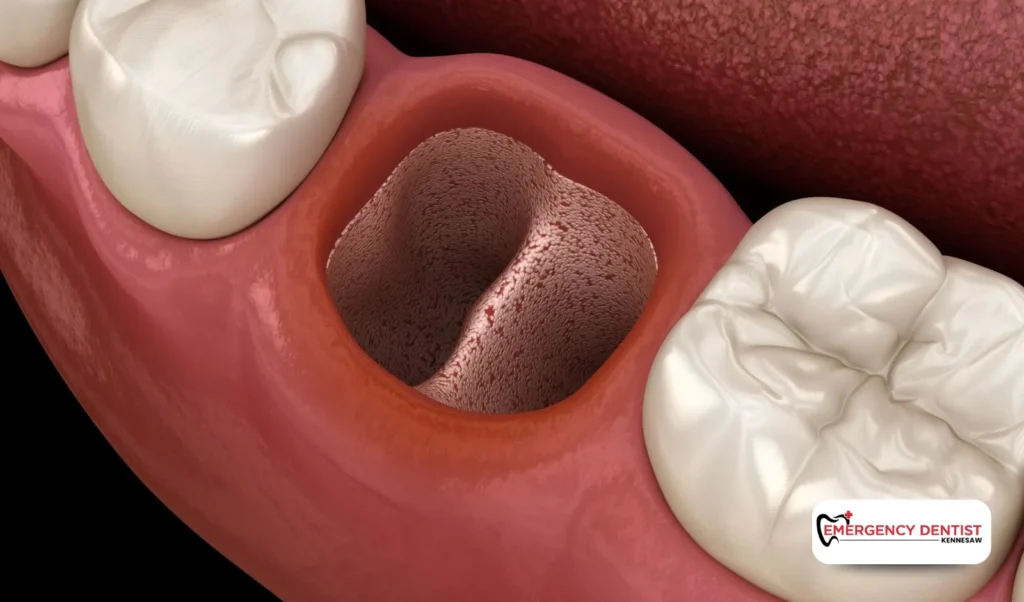Relief Steps When Gum Hurts After Tooth Extraction

When a tooth is removed, it’s common for patients to ask why their gums hurt after tooth extraction. Some gum soreness is a natural part of the body’s healing process, but pain that lingers or worsens could mean something is wrong. Knowing what’s considered normal and what may signal complications helps you care for your mouth and avoid bigger problems later.
Understanding the Healing Process
Healing begins right after a tooth is pulled. A blood clot forms in the extraction site, sealing the empty tooth socket and protecting exposed bone and nerves. This clot is essential for proper tooth extraction healing, as it allows the gum tissue to repair and grow.
- First 24 hours: Expect mild bleeding, gum tenderness, and some pain and swelling. Do not disturb the clot during this time.
- At 48 hours: Soreness and swollen gums may peak. Using an ice pack can ease swelling and make you more comfortable.
- Several days after surgery: Discomfort usually fades, though sensitivity may last. If a wisdom tooth was taken out, the recovery often takes longer because of its size and position.
If your gum hurts after tooth extraction for longer than a week, or the pain suddenly gets worse, it’s time to reach out to your dentist.
When Gum Pain Is Normal vs. a Warning

Some tenderness in the extraction area and surrounding gum tissue is expected. You may notice sensitivity while chewing or when exposed to hot and cold temperatures.
However, if gum hurts after tooth extraction and doesn’t ease within the first several days after surgery, or if you notice ongoing foul tastes in your mouth, worsening swelling, or sharp pain, it may mean your healing process is not going smoothly.
Complications That Can Occur

While most patients heal without issue, complications can happen:
- Dry socket: This occurs when the blood clot is lost too early, leaving the empty tooth socket exposed. Without protection, the bone and nerves cause severe pain, often worse than the original toothache.
- Signs of infection: Watch for fever, pus, redness, or worsening pain and swelling in the extraction site or surrounding tissues.
- Bad breath or foul tastes: Persistent bad breath or an unpleasant taste in your mouth could mean food debris or bacteria are interfering with healing.
If you notice any of these problems, it’s best to contact an Emergency Dentist in Kennesaw right away.
Home Care for Gums After Tooth Extraction
Dentists recommend these steps to protect the gums after tooth extraction and ease discomfort:
- Apply an ice pack: Use it on your cheek for 15 minutes at a time during the first 24 hours to reduce swelling.
- Rinse with salt water: After the first day, gently rinse your mouth with warm salt water two to three times daily to clean the extraction area without disturbing the clot.
- Brush your teeth carefully: Keep brushing, but avoid direct contact with the extraction site. Gentle care prevents irritation.
- Maintain oral hygiene: Good oral hygiene keeps bacteria levels low and supports healing of the surrounding gum tissue.
These simple steps help protect your mouth and lower the risk of complications.
Common Side Effects During Recovery

In the first few days after surgery, patients often notice:
- Tastes in your mouth: Metallic or bitter flavors may come from blood or tissue healing.
- Bad breath: This is common in the early days but should improve as your gums heal.
- Swollen gums: Some swelling is part of the process, but if it worsens after 48 hours, you should contact your dentist.
These side effects generally fade as the healing process continues, provided you follow proper aftercare.
When to Call an Emergency Dentist in Kennesaw
If your gum hurts after tooth extraction for more than a week, or you notice signs of infection such as fever, pus, worsening swelling, or strong odors, don’t wait. An Emergency Dentist in Kennesaw can examine the extraction site, provide treatment, and stop complications before they worsen. Quick action ensures the extraction area and surrounding tissues heal properly.
Conclusion
It’s common for gums to hurt after tooth extraction, especially within the first 24 to 48 hours. Tenderness, mild bleeding, swollen gums, and even a metallic taste in your mouth are part of the normal tooth extraction healing process.
Still, you should watch for red flags. Persistent pain, dry socket, worsening swelling, bad breath, or foul tastes may require professional treatment. By rinsing with salt water, applying an ice pack, practicing careful oral hygiene, and learning how to brush your teeth gently around the surgical site, you can keep your gums after tooth extraction healthy and promote faster recovery.
If pain lingers or you suspect a problem, an Emergency Dentist in Kennesaw can provide relief, prevent complications, and protect your smile.


